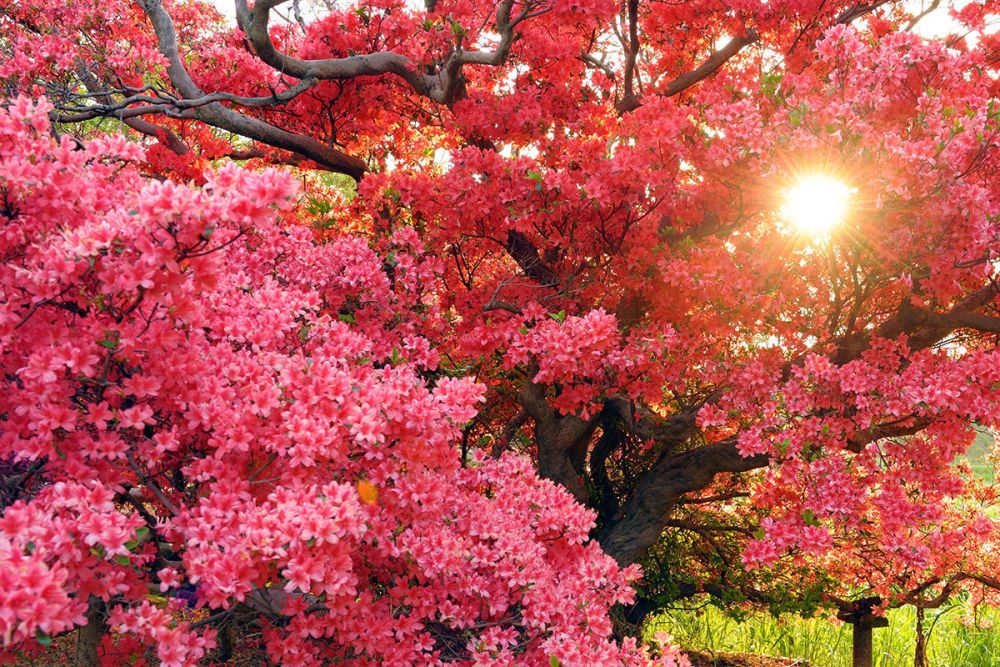

Situated in the heart of Sendai, the largest city in the Tohoku region, Tsutsujigaoka Park is a symbol of serene beauty and one of Japan's most beloved destinations for cherry blossom viewing. The park is renowned for its brilliant display of these iconic flowers and draws in both locals and tourists during the spring season.
Tsutsujigaoka Park has been a staple of Sendai's cultural and natural landscape for centuries. The site was once part of the Edo-period feudal lord Date Masamune's castle grounds and was initially designed for the enjoyment of the ruling class. Over time, it transformed into a public space where people from all walks of life could enjoy the natural scenery and seasonal changes.
The name "Tsutsujigaoka" can be translated to "Azalea Hill Park," indicating the presence of azalea plants which also bloom vibrantly in the park. However, it is the over 360 cherry trees, including the Somei Yoshino variety, that have made the park nationally famous. In fact, Tsutsujigaoka Park has been designated as one of Japan's Top 100 Cherry Blossom Viewing Sites.
Tsutsujigaoka Park's legacy as a cherry blossom destination dates back to its opening to the public during the Meiji Period. Since then, it has become an integral part of Sendai's tourism landscape. The park's peak tourism periods coincide with the blooming of cherry blossoms, usually occurring in early April, during which the park hosts "hanami" parties — traditional Japanese gatherings to enjoy the transient beauty of the flowers.
Annually, the park welcomes a vast number of visitors who come to partake in the revelry of the Sendai Cherry Blossom Festival. The festival features night-time illuminations of the blossoms, cultural performances, and a variety of food stalls that offer local delicacies.
In recent times, tourism in Tsutsujigaoka Park mirrors trends seen across Japan, with an increased emphasis on sustainable and experiential travel. Visitors are encouraged to engage with the park in a way that respects the natural environment, minimizing waste and reducing their carbon footprint.
Virtual tours have also become a popular feature in the wake of travel restrictions and safety concerns. They offer a digital window into the park's beauty, especially during cherry blossom season, increasing accessibility for those unable to visit in person.
Moreover, with the current global interest in wellness and mindfulness, Tsutsujigaoka Park caters to those seeking a peaceful retreat in an urban setting. Walking paths, open green spaces, and quiet areas for contemplation within the park provide an antidote to the fast-paced external world.
Looking to the future, tourism at Tsutsujigaoka Park is expected to continue evolving. Plans to further integrate the park with local cultural experiences and festivals aim to enrich the touristic appeal of the site. Efforts are also being made to maintain the park's landscapes to ensure that Tsutsujigaoka remains a timeless symbol of Japan's natural beauty and a place of cultural significance for generations to come.